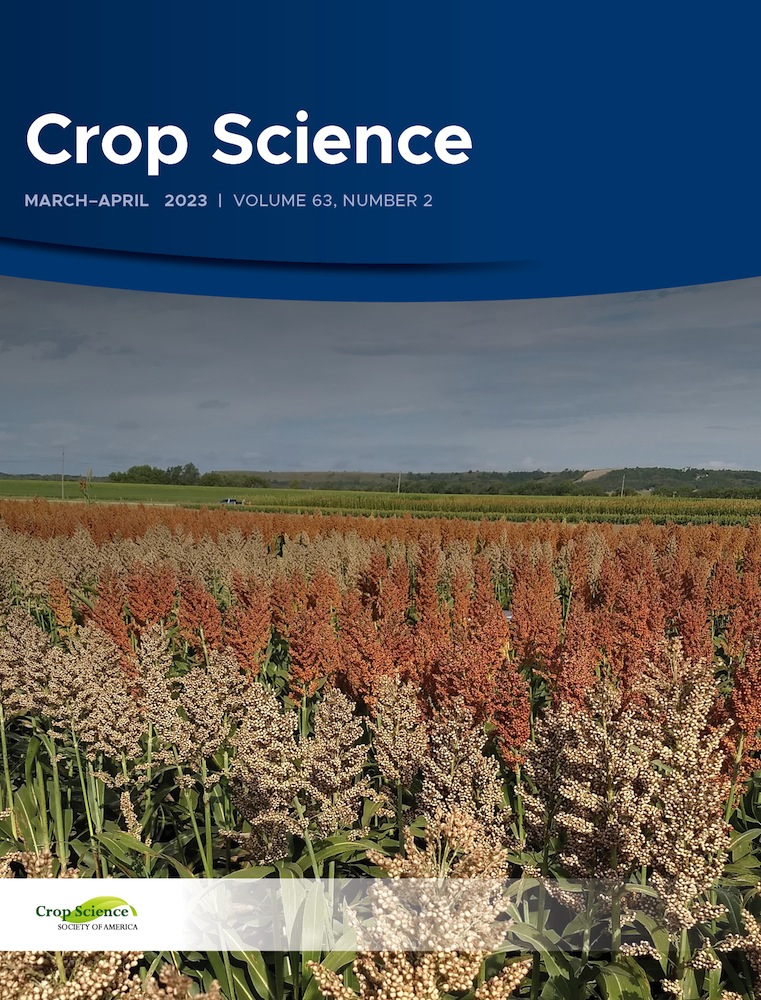Ver ítem
- xmlui.general.dspace_homeCentros Regionales y EEAsCentro Regional Chaco - FormosaEEA Colonia BenítezArtículos científicosxmlui.ArtifactBrowser.ItemViewer.trail
- Inicio
- Centros Regionales y EEAs
- Centro Regional Chaco - Formosa
- EEA Colonia Benítez
- Artículos científicos
- Ver ítem
Cattle preference in Paspalum atratum and its relationship with morphological and anatomical leaf characteristics
Resumen
New atra paspalum (Paspalum atratum Swallen) accessions were found to be differentially grazed by cattle, without differences in herbage accumulation and nutritive value. The aim of this study was to evaluate cattle preference, morphological and anatomical leaf traits and their relationships at four sampling events. Five new atra paspalum accessions and the cultivar Cambá were used. The experimental unit was a 2- x 2- m plot. Treatments were replicated
[ver mas...]
New atra paspalum (Paspalum atratum Swallen) accessions were found to be differentially grazed by cattle, without differences in herbage accumulation and nutritive value. The aim of this study was to evaluate cattle preference, morphological and anatomical leaf traits and their relationships at four sampling events. Five new atra paspalum accessions and the cultivar Cambá were used. The experimental unit was a 2- x 2- m plot. Treatments were replicated four times in a completely randomized design. Cattle preference was determined in spring (December 2016 and 2017), summer (March 2017) and autumn (May 2017), using 6 steers Bos spp. that grazed the plots during 4 h on two consecutive days. Plant height, leaf-blade length, leaf-blade width, and the proportions of five leaf tissues at three leaf regions were measured at each date. The proportion of the leaf that is curved was measured in December 2017. Cattle preference was variable among accessions and sampling events. Some accessions were shorter, with longer and more flexible leaves than Cambá (P <. 05). The proportion of lignified tissues was greater during the spring (2016 and 2017) and summer (7-23%) than in the autumn. One accession had the lowest proportion of lignified tissue in the warm season (8-12%) but the highest during the fall (around 15%). The same accession had the fewest primary vascular bundles in the warm season. Cattle preference was negatively correlated with the proportion of lignified tissues, the number of primary vascular bundles, plant height, and leaf-blade length. Cattle preference was affected by the growing season and reduced by greater presence of leaf structural tissue.
[Cerrar]

Autor
Marcón, Florencia;
Di Lorenzo, Elio Luis;
Peichoto, Myriam Carolina;
Acuña, Carlos Alberto;
Fuente
Crop Science : 1-32 (First published: 03 April 2023)
Fecha
2023-04
Editorial
Wiley
ISSN
0011-183X
1435-0653
1435-0653
Formato
pdf
Tipo de documento
artículo
Palabras Claves
Derechos de acceso
Embargado
 Excepto donde se diga explicitamente, este item se publica bajo la siguiente descripción: Creative Commons Attribution-NonCommercial-ShareAlike 2.5 Unported (CC BY-NC-SA 2.5)
Excepto donde se diga explicitamente, este item se publica bajo la siguiente descripción: Creative Commons Attribution-NonCommercial-ShareAlike 2.5 Unported (CC BY-NC-SA 2.5)


